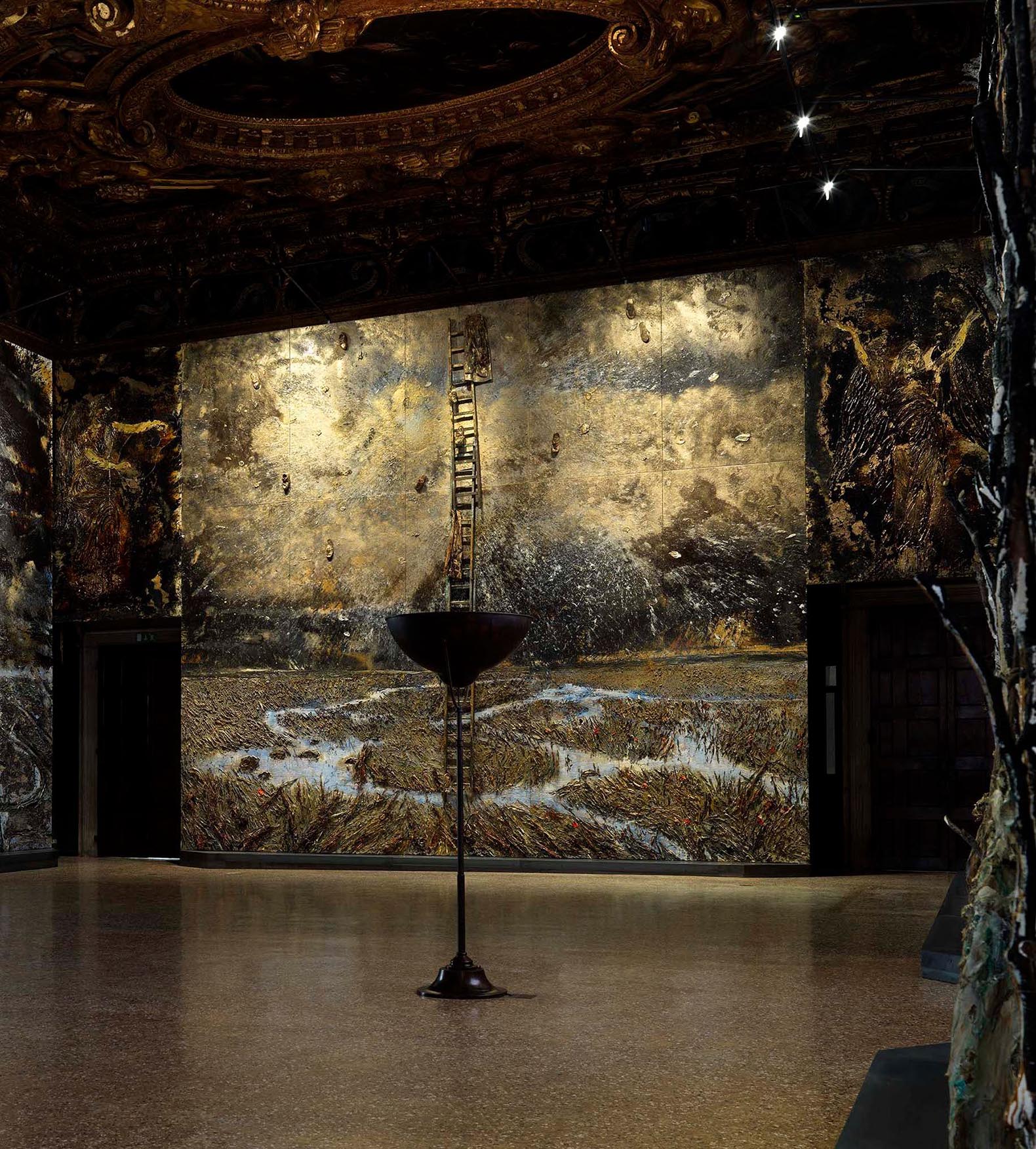Kiefer understood that history is rooted in legends and that it is based on a diffuse ideology derived from worlds very distant in space and time: he did not trust records or witnesses, but he was irremediably attracted to the irrational. His capacity for empathy has been essential when examining the ancestral, which continues to be very present in his production.
In Venice he exhibits the group "Questi scritti, quando verranno bruciati, daranno finally un po' di luce", a title is taken from the writings of a Venetian philosopher, Andrea Emo. The project presented is the result of work carried out between 2020 and 2021: a set of paintings created to be exhibited in the Sala dello Scrutinio space. A space marked by its ornamental and iconographic richness, as well as by the three monumental canvases on its ceiling, where Kiefer's intervention seeks to recognize the capacity of current art to promote reflection on universal and philosophical issues, based on the history of the Italian village.

Anselm Kiefer. “Questi scritti, quando verranno bruciati, daranno finalmente un po’ di luce”. Ducal Palace, Venice
The invitation to Kiefer to participate in this biennial dates back to 2019 and was intended to measure the capacity of this symbolic place of the Serenissima Republic to continue being a center of living culture and not just memory.
Kiefer now converses here, in the room where the doges were elected, with those who were called in their time by the Senate of the Republic to represent on the walls of that Sala dello Scrutinio, after the devastating fire of 1577, the maritime and terrestrial glory of Venice, including Pietro Bellotti and Palma the Younger. His works also refer to the inevitable designs of the time, to the annulment of the past represented by hidden paintings, to the ephemeral, and to a concept that is widely alive in his work: the tragic and irresolvable unity of opposites. Venice is the center of this proposal by the German, but it is not presented to us as an object to celebrating, but rather as a great metaphor for the cultural ties between East and West, as a pretext to bring to light ancient myths and also to reveal the darkness which is typical of our time.






























